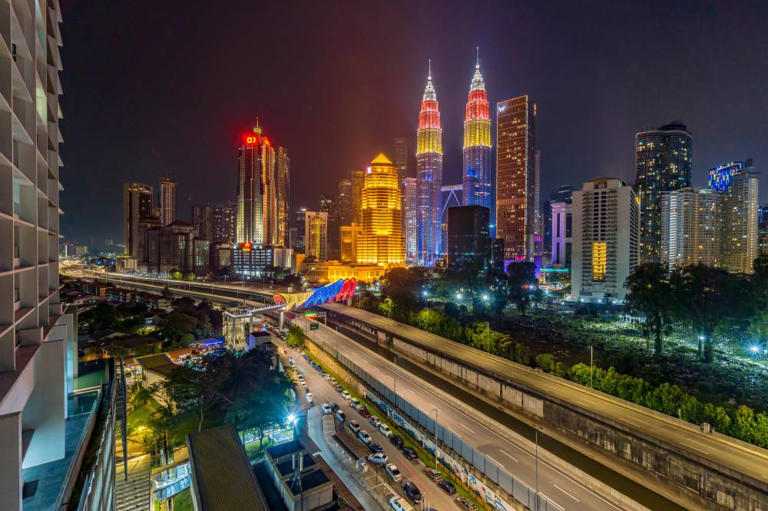Exhibition centres, such as the Kuala Lumpur Convention Centre (KLCC) in Malaysia, are bustling hubs for global trade shows, conferences, and cultural events, welcoming millions of visitors annually. In 2025, with Asia’s MICE (Meetings, Incentives, Conferences, and Exhibitions) industry projected to grow at a CAGR of 7.8% through 2030, maintaining impeccable housekeeping standards is critical to ensuring safety, hygiene, and a positive attendee experience. KLCC, Asia’s first AIPC Gold Standard facility, exemplifies excellence, hosting over 21,800 events and 30 million delegates since 2005, with its 33,659 sqm space requiring meticulous upkeep. Effective housekeeping in such large venues involves strategic planning, eco-friendly practices, and coordination with event schedules to maintain a pristine environment. This article provides a comprehensive guide to housekeeping in an exhibition centre, drawing from best practices and KLCC’s model to ensure cleanliness, sustainability, and operational efficiency.

Step 1: Develop a Comprehensive Housekeeping Plan
Effective housekeeping begins with a detailed plan tailored to the exhibition centre’s size, layout, and event schedule. Assess the venue’s needs: KLCC’s 12,310 sqm of column-free halls, two auditoriums, and 20 meeting rooms require zoned cleaning schedules for high-traffic areas like entrances, restrooms, and food courts. Define cleaning objectives: hygiene, safety, and aesthetics, ensuring compliance with international standards like ISO 20121 for sustainable events. Allocate resources, including trained staff (KLCC employs a dedicated team), eco-friendly cleaning supplies, and equipment like high-capacity vacuums and floor polishers. Create a schedule aligned with events—pre-event deep cleaning, intra-event touch-ups, and post-event waste removal. For example, KLCC’s housekeeping prepares for events like ARCHIDEX 2025 (July 29–June 6) by scheduling nightly deep cleans to avoid disruptions. Budget for supplies (RM 50,000–200,000 annually for large venues) and staff training to handle diverse surfaces like marble and carpet.
Step 2: Prioritize Sustainability and Eco-Friendly Practices
Sustainability is a cornerstone of modern housekeeping, especially in centres like KLCC, which holds EarthCheck Gold certification with 100% food waste diversion. Use eco-friendly products—biodegradable detergents and low-VOC cleaners—to minimize environmental impact, reducing chemical runoff by 30%. Implement waste management systems: segregate recyclables, compost organic waste, and partner with local recycling firms, as KLCC does to achieve zero landfill goals. Adopt energy-efficient equipment, such as water-saving pressure washers and LED-lit cleaning tools, cutting utility costs by 15–20%. Train staff on sustainable practices, like minimizing water use during floor cleaning. For events like Smart City Expo 2025, KLCC’s green protocols ensure waste from 35,000 attendees is managed responsibly, enhancing the venue’s reputation as a sustainable leader.
Step 3: Coordinate with Event Schedules and Teams
Seamless housekeeping requires close coordination with event organizers and venue management. Engage with the centre’s team—KLCC’s staff (+60 3 2333 2888, info@klccconventioncentre.com) collaborates with organizers to align cleaning with event timelines. Schedule pre-event cleaning to polish floors, sanitize restrooms, and prepare catering areas, ensuring a pristine first impression. During events, conduct intra-event maintenance: quick sweeps of high-traffic zones, restroom restocking, and spill response, using discreet teams to avoid disrupting attendees. Post-event, perform deep cleaning, removing booth debris, sanitizing surfaces, and restoring halls, as seen after KLCC’s MIHAS events. Use digital tools like cleaning management software to track tasks and ensure real-time communication with event staff, minimizing downtime in high-demand venues.
Step 4: Ensure Safety and Compliance
Safety is paramount in exhibition centre housekeeping. Train staff on health and safety protocols, including handling biohazards (e.g., spills during food expos) and using personal protective equipment (PPE). Comply with local regulations, such as Malaysia’s Occupational Safety and Health Act, and international standards like ISO 45001. Install sanitation stations—KLCC provides hand sanitizers and touchless bins across its 33,659 sqm space, critical post-pandemic. Maintain air quality with HEPA-filtered ventilation systems, reducing airborne pathogens by 25%. Regularly inspect high-risk areas like escalators and loading docks for hazards. For example, KLCC’s housekeeping team ensures fire exits remain clear during events like DSA (Defence Services Asia), accommodating thousands safely. Document compliance with daily checklists to mitigate risks and ensure audit readiness.
Step 5: Monitor, Evaluate, and Improve Housekeeping Operations
Continuous improvement is key to maintaining high standards. Use digital monitoring tools—sensors or apps—to track cleanliness in real time, identifying high-traffic areas needing frequent attention. Collect attendee feedback via post-event surveys to gauge perceptions of hygiene, as KLCC does to maintain its 4.5-star Tripadvisor rating (2024). Conduct post-event evaluations with the housekeeping team to assess performance, identifying issues like delayed waste removal. Invest in staff training—KLCC trains its team on advanced cleaning techniques and customer service to handle 30 million visitors. Implement innovative solutions, such as UV-C disinfection robots, reducing manual labor by 20%. Regularly update cleaning protocols to align with trends like contactless sanitation, ensuring the venue remains competitive in Asia’s MICE landscape.
Trends and Considerations
In 2025, exhibition centre housekeeping emphasizes sustainability, with 70% of venues adopting green practices like KLCC’s Green Energy Tariff. Technology—UV robots and IoT sensors—streamlines operations, cutting cleaning time by 15%. Health protocols remain critical, with air purifiers and touchless fixtures standard. Costs range from RM 50,000 to RM 500,000 annually, but investments in eco-equipment yield long-term savings. Challenges include managing high-demand schedules and labor shortages, requiring efficient planning and automation. Cultural touches, like maintaining nasi lemak stations at KLCC, enhance attendee satisfaction.
Conclusion
Effective housekeeping in a large exhibition centre like KLCC involves strategic planning, sustainable practices, event coordination, safety compliance, and continuous improvement. By leveraging technology, eco-friendly methods, and close collaboration with venue teams, organizers can ensure a pristine, safe, and welcoming environment. KLCC’s track record of hosting 21,800 events underscores the importance of meticulous housekeeping in delivering world-class experiences in Asia’s dynamic MICE industry.